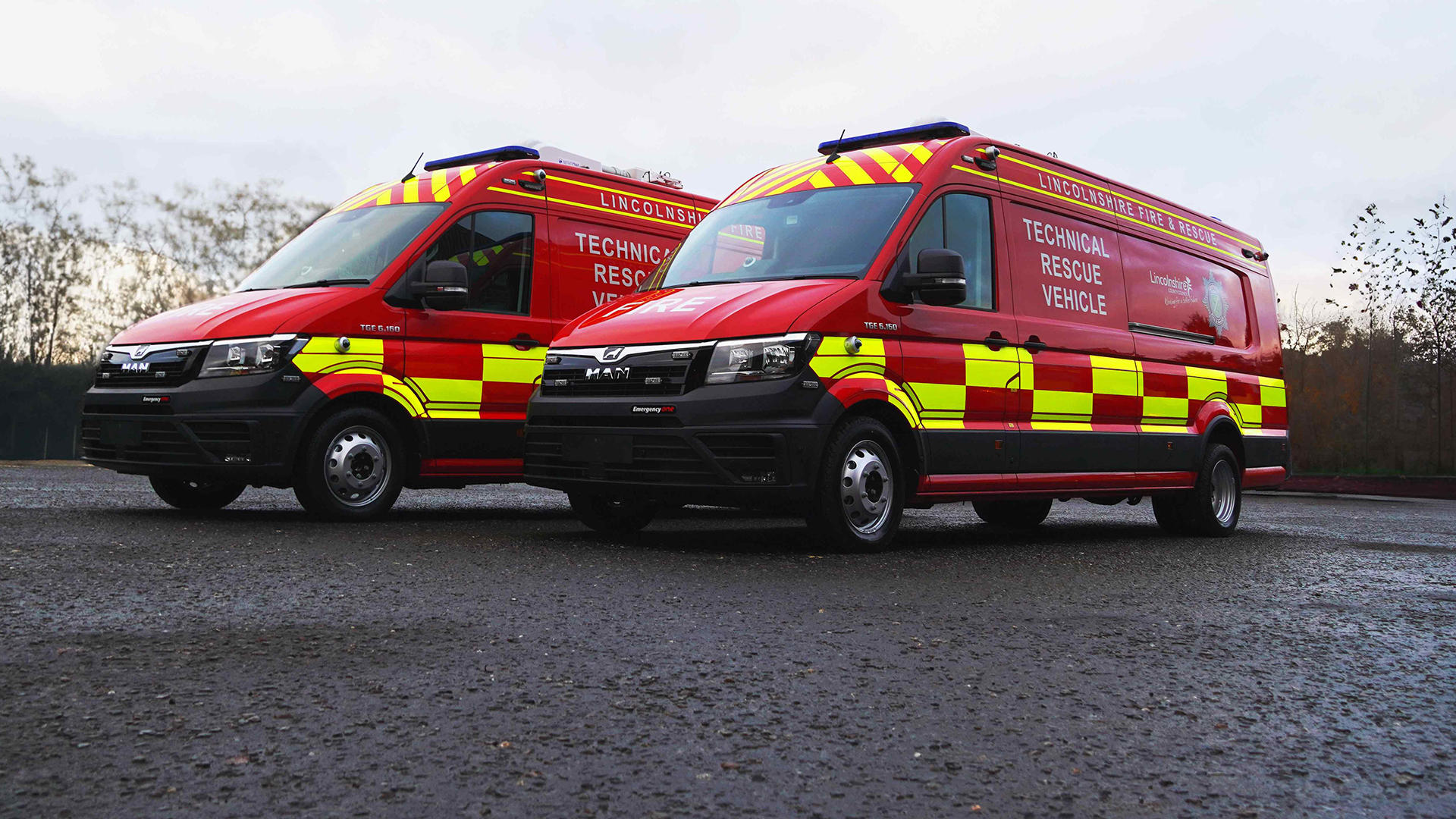
Lincolnshire Fire and Rescue have seven new Technical Rescue Vehicles (TRVs) – vans that carry specialised equipment for incidents such as water rescue and animal rescue.
The service relies on a whole host of vehicles and equipment which all play vital roles in operations. The previous rescue units had reached the end of their serviceable life, and have been replaced with bigger and better vehicles that are also more efficient.
Designed with input from firefighters and incident data, the new vehicles can even carry heavy rescue equipment used to shore up buildings to prevent building collapses.
Cllr Lindsey Cawrey, executive councillor for Lincolnshire Fire and Rescue, said: “When new equipment and vehicles are needed, we’re constantly looking for what best meets the needs of our fire crews and the communities they serve.
“Investing in these TRVs means that a wider selection of equipment can be transported to incidents, and without the need for trailers, making them more efficient. They can also be used more flexibly for a much wider range of incidents, offering greater resilience.
Chief Fire Officer for Lincolnshire, Mark Baxter, said:
“These vehicles are more efficient on every level and have been much improved to include lots of new features. They weigh in at 5.5t and allow for a wider collection of tools and equipment. Three of them carry equipment that can be used to provide a shelter with support and welfare functions at incidents, such as generators and IT equipment.
“They can also carry larger inflatable boats on board for rescue from water and animal rescue. Previously, they needed to be towed behind the TRVs.
Other items that can be carried in the TRVs include Rescue Sleds (an additional option to rescue from water when boats are unsuitable), compressed air cylinders and spares, shoring props, timber for bracing and jacks for lifting heavy vehicles including HGVs.
Mark added:
“The vehicles have been ergonomically designed to make things easier for our crews with special shelving to help with getting to equipment, enhanced and additional lighting together with 360 cameras, an intelligent charging system, and a platform lift to assist with the handling of heavy equipment too.”
The new TRVs will be stationed strategically around the county to provide maximum coverage and optimum response. They attend specialised activities such as RTCs involving heavy vehicles, incidents involving large animals or water related incidents where there is a danger to life and also enhance and support general operations.
